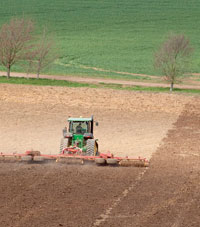Arable land price set for further rise in 2011

Prime arable land prices in the east of England could rise by a further 13-14% next year as the shortage of good commercial arable farms bites.
The latest figures from Savills show that prime arable land prices across Great Britain rose by 11% to £5973/acre in the first nine months of 2010. The biggest price rises came in English arable areas including the eastern counties and the East Midlands, both up by 13%, and the north of England, up 13.9%.
Something of a two-tier market was developing, said Ian Bailey, head of rural research at Savills, with people looking for the best income they could get combined with capital growth, so the best commercial arable land and in some cases prime dairy land was selling well.
“Our farmland value survey shows that in the first three-quarters of 2010 the average value of grade 3 arable land across Great Britain rose by 9.7% to £5180 per acre, following a rise of 6.7% during 2009. This adds to the 21% growth recorded in 2008.
“For anyone thinking of selling in the eastern counties, now might be the time to do it,” said Mr Bailey. “I can’t see supply increasing.”
The cereal price spike of early August had prompted a flurry of activity and even though cereal prices had since fallen back, they were still 40% higher than most had been expecting for this year.
The first half of the year saw a 1% drop in the area of farmland publicly marketed in England. In contrast, the area marketed across Great Britain rose by 15% with 109,800 acres publicly marketed during the same period compared with 95,700 acres in 2009.
All of the increase was accounted for by land in Wales and Scotland, said Mr Bailey, with dairy and stock the only two types of farm where the area marketed rose during the survey period. For this survey, only land and farms larger than 50 acres are included.
Land prices on the west side of Great Britain, with more of a residential influence, had not risen in price. Although grassland farms were proving harder to move, even here Mr Bailey said he would be surprised if values fell next year. They were more likely to stick at current levels or even rise by up to 5%.
